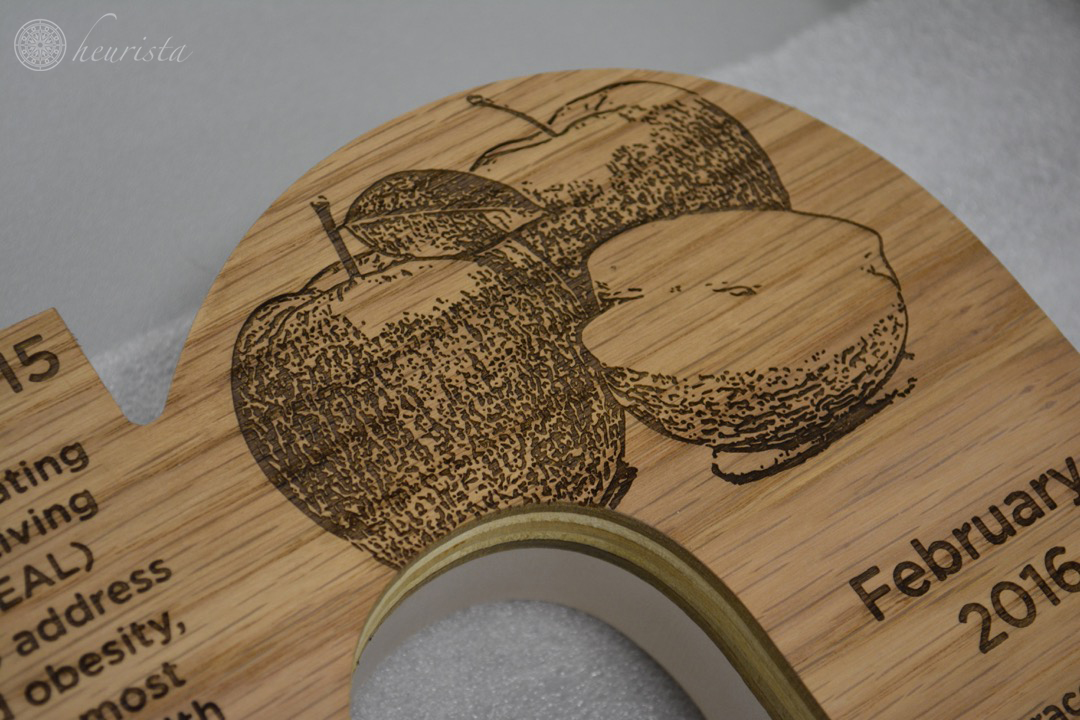Story Captured In Just A Few Words: Children’s Hospital at Erlanger History Wall
In 2018, Heurista was awarded the design commission for the donor recognition and history exhibit in the new Kennedy Outpatient Center at the Children’s Hospital at Erlanger in Chattanooga, Tennessee. This is a dynamic was environment designed to engage the community and provide positive experiences for children and their families needing outpatient services. Notably, the Kennedy Outpatient Center also heralds a new era in the evolution of the Erlanger Health System and the Children’s Hospital at Erlanger. It is the first of several new buildings to be built in the coming years.
When we first met with the client, the vision was for a fairly standard history exhibit, one with layered large-format print graphics and maybe a few objects in cases. Given the other work Heurista had underway for this project, we wanted to re-envision the possibilities before committing to a specific design. The “features” in this building were forces to be reckoned with from a design perspective. The client had secured a historic locomotive to grace the entrance, a tow truck, a fire engine, a toy train to run in the lobby, a full-size hang glider, and a rooftop garden with massive 3D printed flowers. In other words, there was plenty of visual energy already. Architectural integration – marrying our stories to the building itself rather than creating yet another iconic destination within it – had become a driving concept in our design work. We had already developed a feature to recognize the donors to the fundraising campaign for the new facility and an area naming program. Both were intentionally subtle, with a little magic thrown in to make them engaging for any audience. We wanted that same ethos for the history wall.
Early design conversations focused on materials, ones that would integrate with the building’s design, ground the organization’s history in the architecture, and demonstrate this new facility as the natural progression of that history. We gravitated to the wood used for the angled feature walls throughout the building. It was simple, noble, and met our requirements for integration and a sense of place. We also played with the scale. The resulting design has two layers: the logo and three concept words that can be read at a distance (they’re even legible from the street) and detailed story points conveyed on the face of those letters, laser etched directly into the wood surface.
Functionally, the wall is exceedingly simple: a hidden space behind the veneer panels holds a wide array of LED light panels. The thick acrylic backing the wooden letters is lightly frosted and fits neatly into the wall, which was CNC cut to the same pattern by the great folks at Architectural Surfaces in Chattanooga. The letters rest in the wall so that only a section of acrylic wide enough to create a halo of light is forward of the wall, and then the wooden letters, cut in the same white oak as is used throughout the hospital create a sophisticated appearance across the facade. Leaving the plywood edges gives a nod to the construction trades and indicates a “work in progress” energy that pervades Chattanooga.
The words – believe, children and erlanger – were chosen by the client and reflect the core values of the Believe campaign, the child-centric mission, and the close connection between Erlanger and the community it serves. A team at Erlanger combed through over one hundred years of history to narrow down the content with us. Heurista graphic designer, Rachel McLarty then translated those stories and photographs into art that could be literally etched into the new building.
To the right of this wall stand a small alcove featuring the bust of T.C. Thompson, known as the Father of the Children’s Hospital. His legacy laid the groundwork for what the Children’s Hospital at Erlanger has become and he now has a permanent place of honor in its new, landmark facility.
Written By Anne Manner-McLarty
Anne Manner-McLarty is the managing editor of the Journal of Donor Relations and Stewardship. She founded Heurista in 2011, a leading resource for consulting specific to donor relations and stewardship, with particular expertise in the donor recognition program design and implementation.








